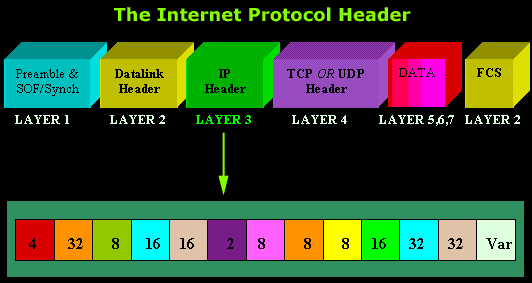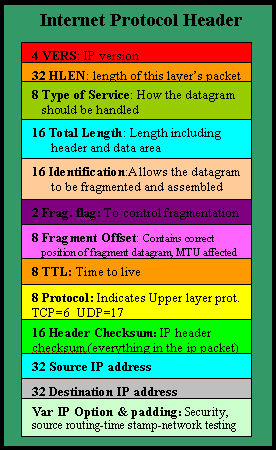|
On the
other hand, if the computer is generating a packet
to send to the network then, as the packet travels
down the OSI model and reaches the
Network layer, the
destination and source IP Address of this packet are
added in the IP Header.
The IP Header
Now we are
going to analyse the Internet Protocol header, so
you can see the fields it has and where they are
placed. In here you will find the destination and
source IP Address field which is essential to every
packet using the protocol.


It's worth
noting that the 9th field, which is the "Protocol"
field, contains some important information that the
computer uses to find out where it must pass the
datagram once it strips off the IP header.
If you
remember, TCP and UDP exist on layer 4 of the OSI
Model, which is the transport layer. When data
arrives at a computer and the packet is processed by
each layer, it needs to know whereabouts above to
pass the data. This protocol field tells the
computer to give the remaining data to either the
TCP or UDP protocol, which is directly above it.
Also, the
Destination IP Address is another important field
which contains the IP Address of the destination
machine.
The next
section talks about the 5 different classes of IP
Address.
|
